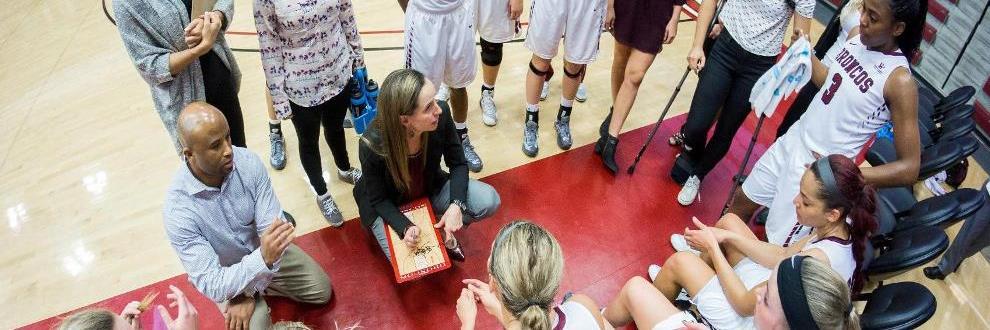
Why we Should Celebrate Women in Sports
Kelly Crowley '99
Every time my rollerblades went clickety-clack on the tiles in the Graham 100 lobby at 1 a.m. for those blissful night skates on Alameda mall, I would think about my mom. I was reminded of how she and her friends in the Class of ’69 would have to “break out” of the Graham complex if they wanted to be out after 10 p.m.
What would the men who opposed having women at Santa Clara University say if they could see me now? Freely leaving the building after dark, in shorts and a tank top, to - gasp! - do something athletic, and with boys!
Then I would think about my dad, also class of ’69, who didn’t have to sneak out of his building when he wanted to roam the campus at night. Ironically, he didn’t because, as he is fond of saying: “I was an engineer. So I was actually studying.”
If you want further evidence that women’s place in American society rocketed into new, powerful territory in the years between my parents’ time at SCU and mine, look no further than sport.
If you want further evidence that women’s place in American society rocketed into new, powerful territory in the years between my parents’ time at SCU and mine, look no further than sport.
When my mom played basketball in school, the only player who was allowed to cross the half-court line was the point guard. So much exertion, that running back and forth! We wouldn’t want women or girls to work too hard. They also considered any contact with a player on the opposing team a foul.
My experience was very different. Most of the happy times I had in middle school were on the basketball court. Running endless liners – all the back and forth, so much exertion – filled my body with endorphins. I was more than allowed – I was encouraged – to push, shove, and hip-check other girls.
“Be aggressive,” Coach Annie would holler, but I didn’t need encouragement. When I reached high school, our varsity coach would admonish us for playing timidly and completing a game with zero fouls. Girls and women’s sports are empowering; most of it these days is intense and physical. Socially, it’s more acceptable for women to be strong.
And yet, while much has changed, challenges and questions remain. Women coaches are leaving their jobs in droves. With a few notable exceptions, prize purses for professional women’s competitions are a tiny fraction of the men’s prize purses. The loss of men’s sports in colleges and universities is still cited as an “unintended consequence” of Title IX, when in actuality, there are HIGHER sports participation rates for men and boys.
Sport can help “under-represented” groups – women, people with disabilities, and any other minority – learn how to compete and to work together to find success. When they get into the real world, these lessons become critical.
Now that I am getting into coaching team sports like water polo and basketball, I witness the difference women’s sport can make in teaching self-confidence. Sport can help “under-represented” groups – women, people with disabilities, and any other minority – learn how to compete and to work together to find success. When they get into the real world, these lessons become critical.
Thanks to the women who continue to lead the way forward, notably Brandi Chastain ‘91, Julie Foudy, Marlene Bjournsrud (co-founders of the Bay Area Women’s Sports Initiative), and the Women’s Sports Foundation.
Feb. 3 was the 30th National Girls and Women in Sports Day. If you know a girl or a woman who plays or coaches sport, thank them and encourage them to keep doing what they do, and check out the Bronco Women’s basketball team. They’re having a great season!
Feb 9, 2016

